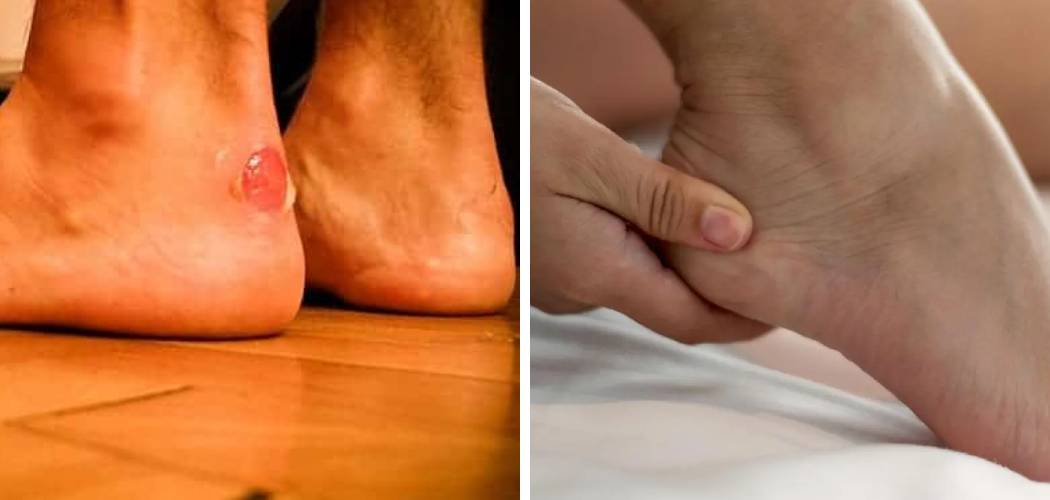There’s nothing more frustrating than having a new pair of shoes that start rubbing the back of your heel after just a few wears. Not only is it sore, but it can also lead to blisters. So, how do you stop this from happening? Please keep reading for our tips on how to stop shoes rubbing the back of your heel!
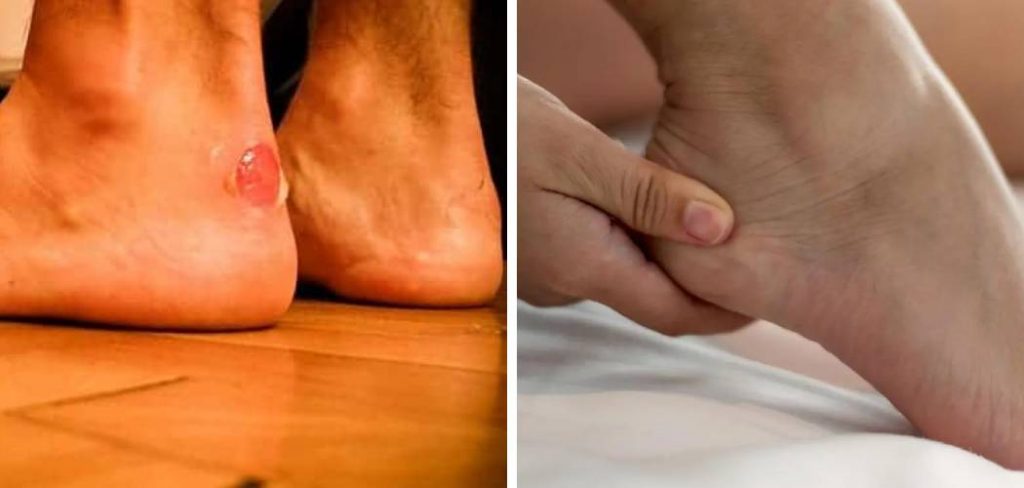
Summary: If your shoes are rubbing the back of your heel, there are a few easy solutions. One is to try wearing thicker socks or an insole to add cushioning and keep the heel from rubbing against the shoe. You can also spray the shoe with a vinyl protectant which will reduce friction and make it more comfortable to wear.
Why Should You Stop Shoes Rubbing the Back of Your Heel?
There are a few reasons why you should stop shoes rubbing the back of your heel. It is sore and can lead to blisters, but it can also cause damage to the skin over time. If you let the shoes rub against your skin for too long, it can cause rashes, calluses, and even Athlete’s Foot.
Required Materials
- Comfortable shoes that don’t rub the back of your heel
- Bandaids
- Moleskin
- Athletic tape
Why Are My Shoes Rubbing My Heels?
There are a few reasons why your shoes might be rubbing your heels. First, if the shoes are too tight, they might be rubbing against your skin. This can cause blisters to form and is very uncomfortable. In addition, if the shoes are too loose, they might be slipping off your heels as you walk, which can also be very irritating.
You Are Using The Wrong Shoes
If you are constantly getting blisters on your heels, it might be time to invest in a new pair of shoes. Ensure that the shoes you buy fit well and do not rub against your skin. In addition, make sure that the shoes are comfortable and do not slip off your feet.
You Have A Medical Condition
If you have a medical condition that causes your feet to sweat excessively, this can cause your shoes to rub against your skin and cause blisters. If you have this condition, you should see a doctor find out how to treat it.
The Shoes Are Too Big
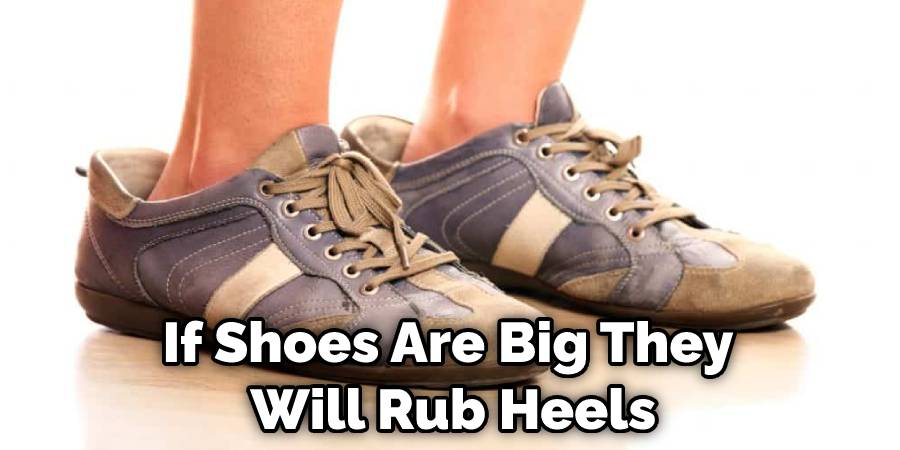
If your shoes are too big, they will rub your heels. This is because there will be a lot of extra space in the back of the shoe, and your heel will slide around inside the shoe. This can cause blisters and other irritation.
The Shoes Are Too Small
If your shoes are rubbing the back of your heel, it might be because they are too small. You might need to go up a half size or even a whole size to get a pair of shoes that fit properly and don’t rub.
You Are Wearing The Wrong Socks
Another reason your shoes might be rubbing your heels because you are wearing the wrong socks. Socks that are too thin or made from a non-absorbent material can cause your shoes to rub against your heels. When this happens, the skin on your heel can become irritated and inflamed.
How to Stop Shoes Rubbing the Back of Your Heel Step by Step Guide
Step 1: Choose the Right Pair of Socks
The first step to prevent your shoes from rubbing the back of your heel is to choose the right pair of socks. If you are going to be wearing closed-toe shoes, wear socks that come up over the top of your foot and ankle. This will help create a barrier between your skin and the shoe.
Step2: Shoe Stretcher Might Work for Your Heels
If the methods mentioned above do not work for you, you might need to use a shoe stretcher. A shoe stretcher is a device that helps to stretch out the sides and width of shoes. This will help your heels to fit more comfortably in your shoes. You can purchase a shoe stretcher at most shoe stores or online.
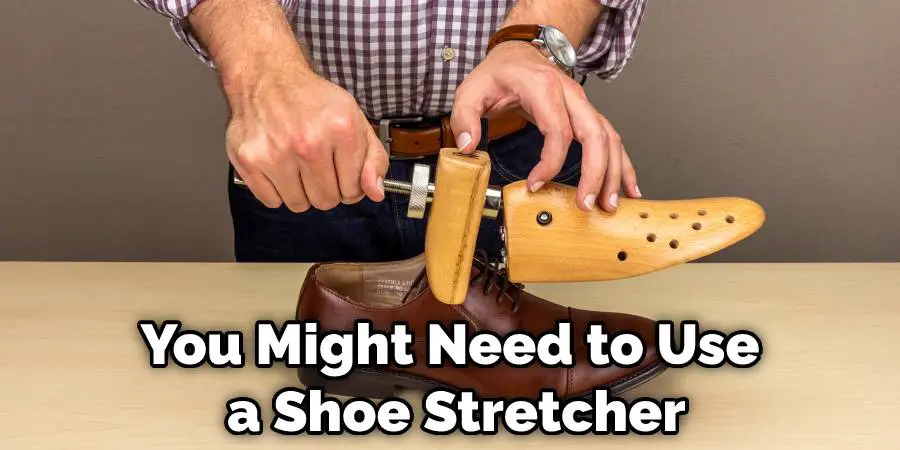
Step 3: Use Comfortable Insoles
If you have shoes that fit well but still rub the back of your heel, it may be time to invest in a good pair of insoles. Insoles can add cushioning and support to your shoes, and they can help reduce friction.
There are a variety of insoles available on the market, so be sure to choose one specifically designed for heel rubbing. When you’re not wearing your shoes, keep the insoles in a safe place so that you can insert them into your shoes when needed.
Step 4: Shoe Materials
Choose shoes with smooth, soft materials. Shoes made of synthetic materials such as polyester or nylon are often less likely to irritate the skin than those made of natural fibers like cotton. If you must wear shoes made of natural fibers, look for ones that have been treated to be anti-static.
Some people are allergic to certain shoe materials, such as latex. If you think you may be allergic to a material, avoid shoes made with that material and look for an alternative.
Step 5: Reduce the Moisture in Your Shoes
If you’re someone who suffers from sweaty feet, you know how important it is to keep your shoes as dry as possible. Otherwise, you risk developing blisters or other irritation. One way to reduce the moisture in your shoes is to use a product like Gold Bond’s Friction Defense Stick. This stick helps to absorb sweat and keep your shoes from feeling wet.
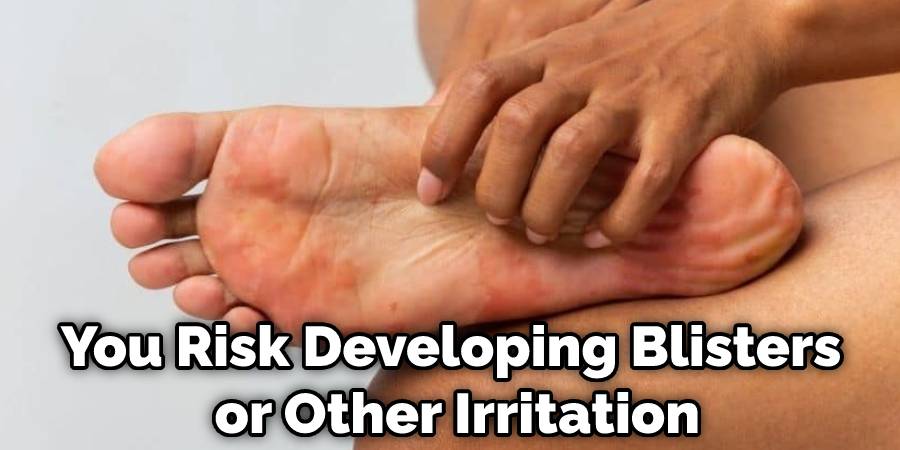
However, if you don’t have access to a friction defense stick, you can also try placing some deodorant or foot powder in your shoes. This will help to absorb any moisture and keep your feet feeling dry.
Step 6: Stretching Your Shoes Can Solve the Problem
If your shoes are still rubbing the back of your heel after you’ve broken them in, you can try stretching them. There are a few ways to do this, but the most effective is to use a shoe stretcher. You can find these online or at most shoe stores.
If you don’t have a shoe stretcher, you can try using a sock or a can of soup to stretch your shoes. Just place the sock or can inside the shoe and then wear the shoe for a few hours. This will help stretch out the shoe’s fabric and make it more comfortable to wear.
Step 7: Cobbler Can Stretch Your Shoes
A cobbler can help stretch out your shoes so that they don’t rub the back of your heel. If you have a pair of shoes that you love but constantly cause blisters, take them to a cobbler and have them stretched out. This may be a more expensive solution, but it will save you from buying a new pair of shoes every few months.
However, If you don’t have the money to take your shoes to a cobbler, there are a few things you can do at home to stretch them out. One way is to fill two zip-lock bags with water and put them in your shoes overnight. Then, remove the bags in the morning, and your shoes will be a little looser. You can also use a hairdryer to stretch out your shoes. Point the hairdryer at your shoes for about 15 minutes, and they should be a bit more comfortable to wear.
Step 8: Check for Sharp Edges
Sometimes the cause of the rubbing is not the shoes themselves but rather the sharp edges of the heel counter. If this is the case, use a file or emery board to sand down any rough spots. Be careful not to make too much change, as you don’t want your shoes to start slipping off. Just a quick once-over should do the trick.
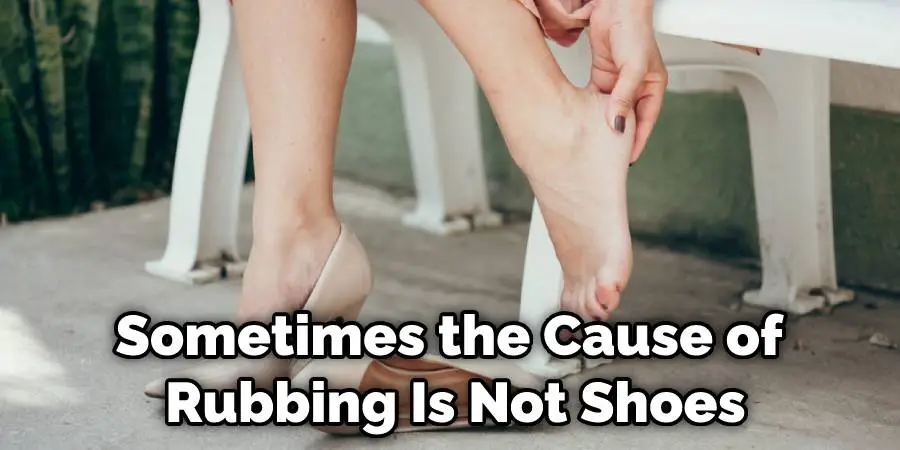
Step 9: Use an Anti-Friction Balm
If you are prone to getting blisters, you might want to consider using an anti-friction balm on the back of your heel. This will help create a barrier between your skin and the shoe and prevent rubbing and friction. There are many different brands available, so find one that works for you and apply it before putting your shoes on.
Step 10: Adjust the Laces on Your Shoes
Sometimes, the simple solution is to adjust the laces on your shoes. If they’re too tight or too loose, it can cause the back of your heel to rub. Ensure that the laces are snug but not tight and that there’s enough space in the shoe for your heel to move around. You may also want to try a different lacing technique, such as crisscrossing the laces or using a lace lock.
If you’re still having trouble with your shoes rubbing the back of your heel, there are a few other things you can try. For example, you can use moleskin or other protective pads on the back of your heel or try a heel liner or sleeve. In addition, a few products are available that are designed to stop your shoes from rubbing, such as Heel Shieldz and No-Blisters.
If you’ve tried all of these solutions and still have problems, it may be time to get a new pair of shoes. First, talk to your local shoe store about what type of shoe would be best for you, and make sure to get fitted so that you’re wearing the right size. Then, with a little bit of effort, you can find a pair of shoes that don’t rub the back of your heel. Keep reading for more information about how to stop shoes rubbing the back of your heel.
You Can Check It Out to Break in Flats That Rub Your Heel
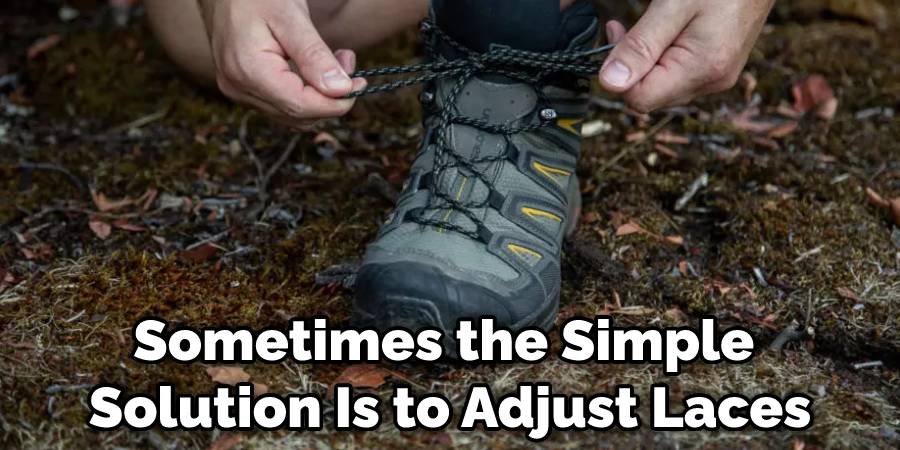
What Is the Best Way to Stop Shoes from Rubbing the Back of Your Heel?
One of the most common complaints we hear from our patients is that their shoes are rubbing the back of their heel, causing pain and irritation. While this can be a nuisance, it is often easily remedied with a few simple steps.
The first thing you will want to do is identify the source of the problem. For example, if your shoes are too big, they will likely slip off your heel as you walk and rub against the back of your ankle. This can be easily fixed by purchasing a new pair of shoes that fit properly.
If your shoes are the correct size but still rub, it is likely that the heel counter (the hard part of the shoe that wraps around your heel) is too stiff and is not molding to the shape of your foot. In this case, try wearing your shoes around the house for a few hours to help break them in. You can also stuff them with socks or newspapers to help soften the material. If you want to know more about how to stop shoes rubbing the back of your heel, keep reading.
You Can Check It Out to Soften the Back of New Shoes
Frequently Asked Question
Can I Use a Flat Sole Instead of Inserts in My Shoe?
If you have heel pain, you may be wondering if it’s better to use a flat sole or an insert in your shoe. The short answer is that it depends on the cause of your heel pain. For example, if you have plantar fasciitis, using an insert may help relieve pain by providing cushioning and support.
How Do You Stop New Shoes from Giving You Blisters?
If you’re someone who gets blisters easily, you know how painful they can be. Blisters often form on the heels and can make wearing shoes extremely uncomfortable if you’re breaking in a new pair of shoes or simply wearing a pair that doesn’t fit quite right.
Does Vaseline Stop Shoes Rubbing?
There is no definitive answer to this question. Some people say that applying a layer of Vaseline to the back of your heel can help prevent the shoes from rubbing, while others claim that it does not make a difference. If you are experiencing discomfort or soreness from your shoes rubbing against your heels, you may want to try using Vaseline and see if it makes a difference for you.
Which Type of Flat Sole Do You Recommend for Me, and What Does It Include?
Many types of flat soles are available on the market, but not all of them are created equal. If you’re looking for a flat sole that will help stop your shoes from rubbing the back of your heel, you’ll want to choose one that includes a layer of cushioning and support. Additionally, select a flat sole that is made from a breathable material to help keep your feet cool and comfortable.
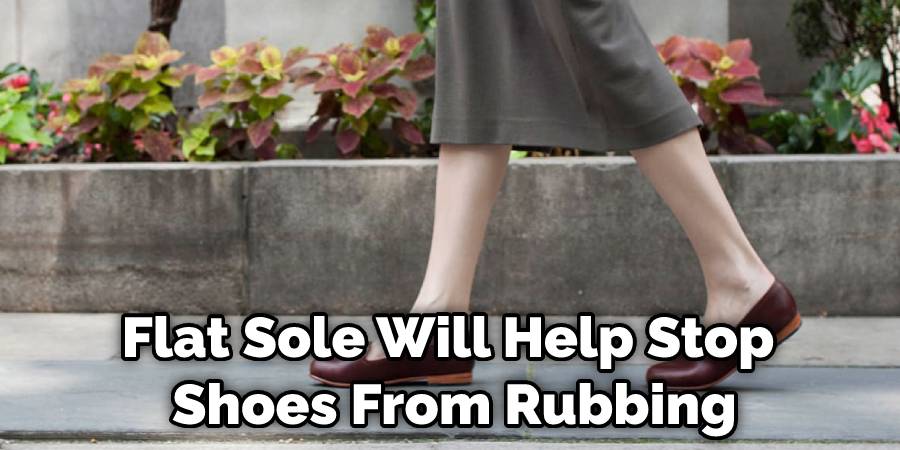
How Can I Stop My Shoes from Rubbing the Back of My Heel?
There are several ways to stop your shoes from rubbing the back of your heel. One way is to purchase shoes that fit correctly. Another way is to put moleskin on the back of your heel. You can also put bandaids on the back of your heel, or you can buy shoe inserts. Whichever method you choose, make sure that you follow the directions carefully to not cause further irritation to your heel.
You Can Check It Out to Stop Shoes From Rubbing Achilles
Conclusion
If you’re experiencing blisters or soreness on the back of your heels, it may be time to try a new pair of shoes. In the meantime, here are a few tips that should help stop your shoes from rubbing the back of your heel. Do any of these solutions work for you? Let us know in the comments below! Thanks for reading our post about how to stop shoes rubbing the back of your heel.

